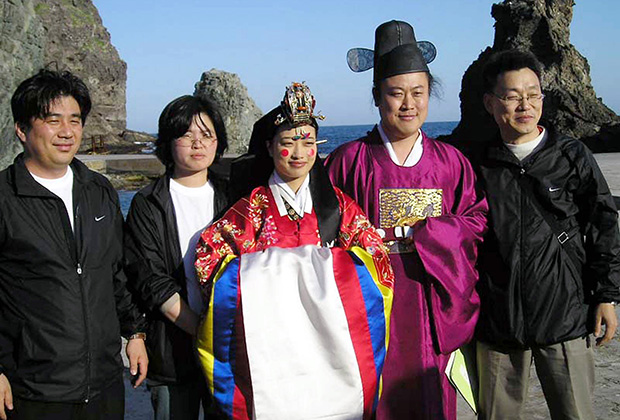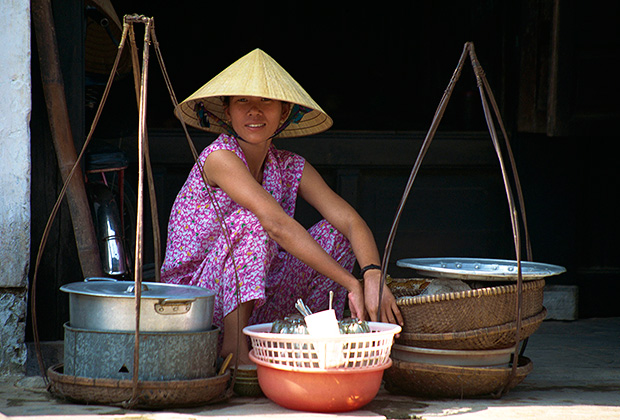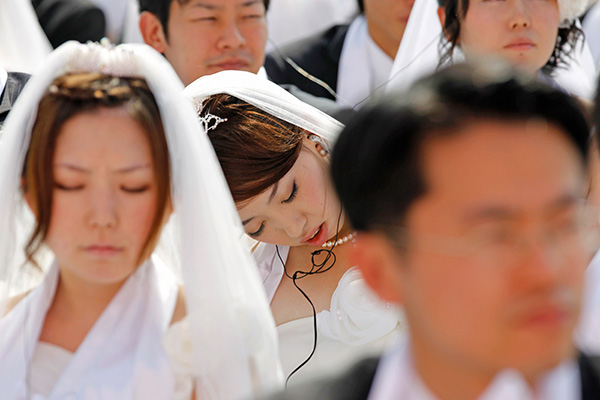South Korea has changed its attitude in regard to marriages with foreigners. A couple of decades ago it was considered to be something reprehensible, and is now there is no condemnation. Moreover, the country has developed an unusual situation — wives from abroad are chosen not by successful citizens but by losers from depressed areas of Korea. And preference is given to women from Vietnam. However the brides from China earned a bad reputation. “Lenta.ru” found out where these features of the Korean market for foreign wives are coming from.
All the references about Korea — both North and South – are calling it a “mono-ethnical state”. Until recently, this definition was quite in accordance with the truth, because of lack of national minorities on the Korean Peninsula (of course, aside from several Chinese communities, both in North and in South).
But times change, and now it is becoming increasingly clear that South Korea is turning into a multinational state. By the end of 2014 there were 1 million 797 thousand foreigners, representing 3.5 percent of the country’s population. Over the last ten years this figure has doubled. Korea grew rich, and entered the ranks of developed countries, and naturally it became attractive to all sorts of immigrants.
The foreigners coming to South Korea for a short period of time are divided into two distinguished groups. First, there are more than a million of unskilled foreign workers (guest workers). And secondly —foreign wives.
With migrant workers everything is quite simple. Wages in Korea are quite decent now, even by the European standards, let alone for Asia. So it’s not surprising that the citizens from neighboring States rushed to the country to make a fast won. Immigrants from China are now dominating among the guest workers; Vietnam, the Philippines, Indonesia and Uzbekistan are the major providers of foreign workers. As in elsewhere, migrant workers in Korea are working there, where the natives are not willing to be employed. Guest workers are mostly temporary ones, though some of them can stay in Korea forever.
This is not the case with the other category of immigrants — the foreign wives of the Korean citizens.
The formation of this social group in the country was a surprise. Although the first international wedding took place in Korea in the late nineteenth century, in the early 1990s many interviews and polls demonstrated that the Koreans are very unkindly referring to the idea of a marriage with a foreigner. In those days the vast majority of mixed marriages were represented by the unions of the American soldiers stationed in Korean regiments and the girls from different kinds of questionable establishments. It was clear that those around regarded such marriages with great suspicion.
But times change, and now South Korea is one of the world’s leaders in international marriages. For the last decade, approximately every tenth marriage in the country was between a Korean citizen and a foreigner. The peak was in 2005, when the proportion of marriages with foreign citizens reached 13.5 percent. In 2013 the index was 8.1 percent.
However, it is more correct to speak not about the marriages, but the marriages with foreign women. About two-thirds of such unions (to be precise, 70.7 percent in 2013) are between Korean men and foreign women. Among these women immigrants from poor countries of East and Southeast Asia are dominating: Chinese women — 33.1 percent, Vietnam women – 31.5 percent, Filipina women — 9.2 percent, Cambogia women — 4.0% (according to 2013 data).
In most states of the world the residents of the more developed parts of the country are more likely married to the foreign citizens, but in Korea the situation is quite opposite: the less the region is developed the higher is the proportion of mixed marriages. In problematic by Korean standards areas – the Southwest of the country – the percentage of marriages with foreign women may exceed by 20 percent in average.
And this is not surprising: from the Korean side mostly rural residents of depressed regions are getting married in such way. This is due to the unfavorable demographic situation. Most young women are leaving their native villages after finishing school, while the men remain on ancestral land and do the farming.

As a result of this migration there was an acute shortage of girls in remote villages. And many single men are turning to the services of agencies that help looking for brides from abroad. Especially most actively these services are used by those who have very little chances with the Korean marriage market – drunkards, sluggards, widowers with children, and people with poor health.
When the boom of mixed marriages in South Korea was just starting, most of the “wives to order” were brought from China, mostly from Manchuria, where many ethnic Koreans live. The advantages seemed obvious: most Koreans from PRC had maintained the traditional way of life and their native language, and it was implied that Koreans from Manchuria villages are quickly adapting to life in South Korea.
However with time Korean peasants partly disappointed in the Chinese wives. It was found out that Chinese Koreans (and Chinese women in General) have one unpleasant tendency: after spending in marriage allotted by law period of time and thus obtaining the rights to the coveted passport of the Republic of Korea, they immediately divorce their deadbeat husbands and disappear in an unknown direction.
So, these days Vietnam is the most popular as a supplier of brides, especially its southern areas, where 78% of visitors to Korea are the Vietnamese brides. In Korean provincial towns one can often find mediation offices, which showcases are laden with advertising posters, telling about the various advantages of Vietnamese ladies. They affirm that Vietnamese women become the exemplary daughters-in-law, they are incredibly diligent and, most importantly, unlike the Chinese, they do not tend to run away from their husbands after obtaining a passport.
To its credit, Vietnam, for all its progress in recent years, still remains a very poor country by world standards. Therefore, for ordinary Vietnamese girl Korean rural house, which has not only electricity (round the clock, without interruption), but also inner plumbing and running hot water, and it just seems like a palace from a fairy tale. This girl often agrees to not to pay attention at the strangeness of her future spouse, and especially at his age. In average Vietnamese-Korean marriages the groom is 11 years older than the bride, and in marriages with Cambodian girls the average gap in age is 16 years.

The number of international marriages in Korea reaches 200 000. However, many of them (40 percent) are broken up rapidly, but foreign women who escaped their drudgery Korean men usually stay in Korea. As a rule they marry again, but by their own choice, and being aware of the local specifics.
The children of mixed parentage are the natural consequence of such marriages, their number is already close to 300 000. Their fate is not always simple. Typically, these children are not doing well at school. According to Korean tradition, the education of offspring is mother’s obligation. However, a young Vietnamese peasant woman, who only finished primary school and is not too fluent in the Korean language, is not able even to check the homework of her child. Children from mixed marriages also face with certain discrimination.
Reports of problems associated with international marriages often appear in the press, as well as the stories of the Koreans themselves, who had the relevant experience. They have had some impact on public opinion. So the number of such unions has decreased in recent years, but still remains high by any standards.
However, the attitude towards immigrants is one of the few issues in which the South Korean politicians agree with each other. Both left-wingers and right-wingers generally concur that in those conditions when the country’s population is rapidly aging, immigration has no other alternatives. Hence the considerable funds are allocated to the assimilation of immigrants, primarily foreign wives. For them the courses on Korean language and customs (including Korean cooking) are arranged, and various consulting and legal centers are established. In recent years, there was even the revision of school textbooks, from where some passages in the spirit of biological nationalism of “blood and soil” were removed. It has always played a significant role in the Korean perception of themselves and the surrounding world. All in all, until now the situation seems clear: South Korea is turning into a multi-ethnic country, and the local authorities are partly trying to encourage this process and partly to control it.


Leave a Reply